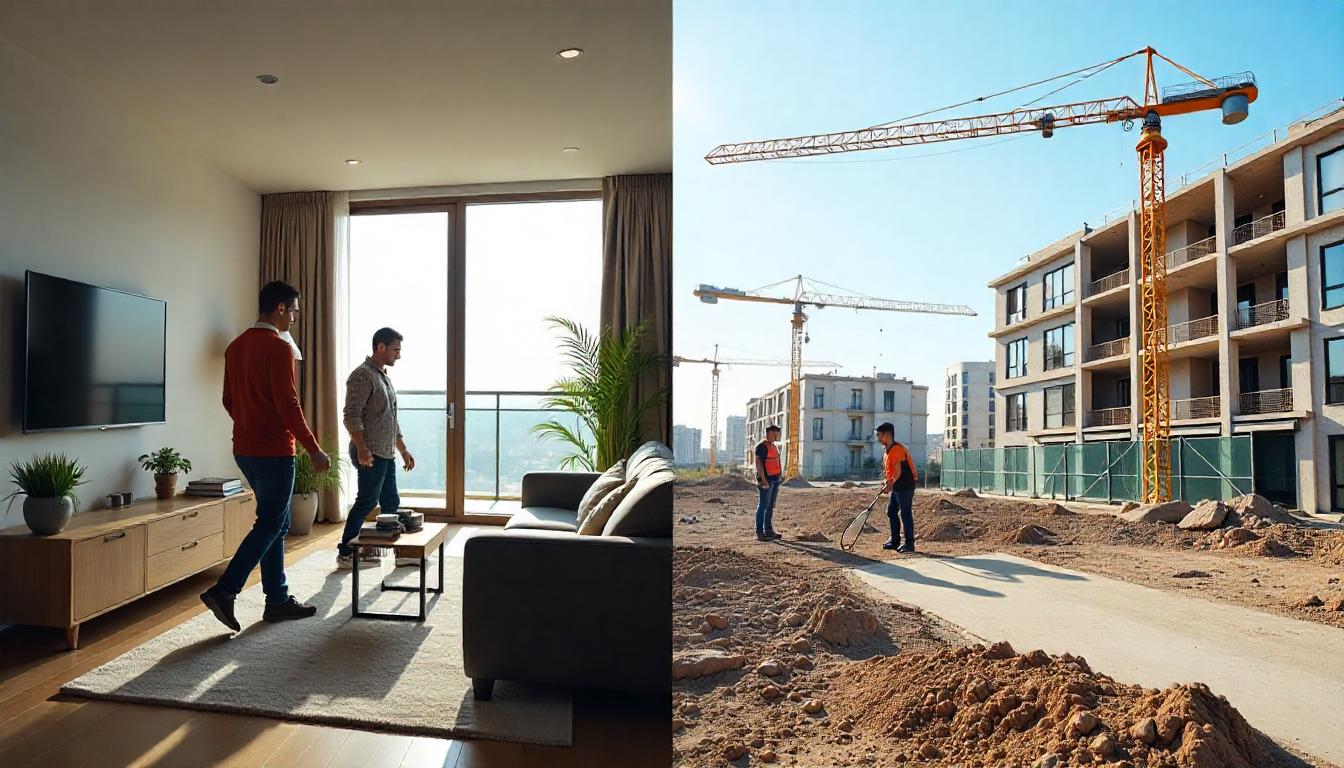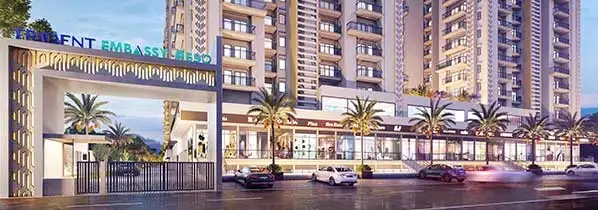
Ready-to-Move vs Under Construction: What’s Right for You in 2025?
Navigating India’s Property Maze in 2025
In 2025, as India’s real estate sector matures and diversifies, one of the most pressing decisions for homebuyers continues to be this: should you buy a ready-to-move-in home or invest in an under-construction property? This question isn't just about possession timelines—it's about your lifestyle, financial preparedness, investment goals, and risk appetite.
According to the FICCI–ANAROCK Consumer Sentiment Survey H2 2023, buyer preference for ready-to-move and new-launch homes has almost equalised, with the ratio standing at approximately 23:24, down from 46:18 in H1 2020. While RTM properties still appeal to those seeking immediacy and zero construction risk, under-construction homes continue to draw investors and price-sensitive buyers due to their competitive pricing and customisation possibilities.
Let’s dive into a comprehensive comparison to help you decide, tailored to the realities of India’s dynamic real estate market in 2025.
Understanding the Basics: What Are These Property Types?
Ready-to-Move-In Properties
Ready-to-move-in properties are completed residential units where possession is available immediately after purchase. These homes eliminate uncertainty, as buyers can physically inspect the unit, evaluate the construction quality, and move in without delay. There are no risks of project delays or cost overruns, and since the property is already built, GST is not applicable—offering a clear advantage on overall expenditure. These properties are ideal for end-users seeking instant relocation or rental income.
Under-Construction Properties
In contrast, under-construction projects are properties still in the development phase, typically offering a longer possession timeline but at a more affordable entry price. These homes often provide better payment flexibility through construction-linked plans and give buyers the chance to customise certain aspects. However, they carry risks like potential delays, changes in project specifications, and are subject to 5% GST (as per the current tax regime). For those with a medium- to long-term horizon and risk appetite, under-construction properties can offer higher capital appreciation.
Pros & Cons: A Side-by-Side Comparison
To make an informed choice, let’s break down the key factors that differentiate ready-to-move and under-construction properties:
Sources: GST Council, ANAROCK
Financial Considerations: Counting the Costs
Total Cost of Ownership
Ready-to-move homes come with a higher upfront cost but eliminate the dual burden of paying rent and EMIs simultaneously, a common challenge for under-construction buyers. For example, in Pune’s Baner, a ready 2BHK might cost ₹80 lakh, while an under-construction equivalent could start at ₹60 lakh, but delays could stretch your financial planning if you’re renting elsewhere.
Maintenance costs also differ. RTM properties often have established resident welfare associations (RWAs) with fixed charges, whereas UC projects may include hidden costs like development fees or escalated maintenance post-handover. Always factor in these expenses when budgeting.
Tax Benefits
Both property types qualify for tax deductions under Section 80C (principal repayment up to ₹1.5 lakh) and Section 24(b) (interest on home loans up to ₹2 lakh for self-occupied properties). However, RTM buyers can claim these benefits immediately, while UC buyers must wait until possession, which could delay tax savings by years.
GST Implications
GST applies only to under-construction properties, typically at 5% for residential units without input tax credit, including those categorised as affordable housing. Ready-to-move properties are exempt from GST, as they are treated as completed assets under the law. While UC homes may seem more cost-effective initially due to this tax structure, buyers must factor in overall pricing, possession timelines, and potential delays. It’s advisable to confirm GST applicability with the developer and cross-verify details via the RERA portal to ensure full transparency.
The Cost of Delays
Delays in under-construction projects can be a financial strain. For instance, if you’re paying ₹20,000 in rent and a ₹30,000 EMI while waiting for a delayed project in Noida, a 12-month delay could cost you an additional ₹6 lakh. RERA mandates penalties for delays, but compensation may not fully cover such expenses.
Expert Advice
“For buyers with long-term vision and the ability to wait, under-construction properties offer higher ROI, provided the builder has a strong track record. But for most urban families today, the value of immediate possession, transparency, and risk-free living makes ready homes more desirable,” — Anuj Puri, Chairman, ANAROCK (source: ET Realty)
Legal & Regulatory Factors: Safeguarding Your Investment
The Role of RERA
The Real Estate (Regulation and Development) Act, 2016, has transformed India’s real estate landscape by enforcing transparency. For under-construction properties, RERA mandates developers to register projects, disclose timelines, and adhere to a phased payment schedule tied to construction progress. Buyers can verify details on state RERA portals, such as Maharashtra RERA. RTM properties, while less reliant on RERA, still benefit from its oversight, ensuring developers provide completion certificates (CC) and occupancy certificates (OC).
Key Documents for RTM Properties
Completion Certificate (CC): Confirms the project meets building norms.
Occupancy Certificate (OC): Verifies the property is ready for habitation.
Always inspect these documents to avoid legal hassles, especially in cities like Bengaluru, where non-compliance is a concern in older projects.
Risk Mitigation for UC Properties
Verify RERA Registration: Ensure the project is listed on the state RERA portal.
Check Developer Track Record: Research past projects for timely delivery and quality.
Legal Due Diligence: Confirm land titles, environmental clearances, and building permits.
Site Visits: Visit the site at different times to assess progress and surroundings.
Source: RERA
Buyer Profiles & Preferences: Who Should Choose What?
Market Trends in India (2024–25): What’s Happening?
According to Global Property Guide, India’s residential real estate market is thriving, with 372,936 units launched in 2024, a 6.33% increase from 2023. Sales hit a 12-year high of 350,612 units, driven by demand for premium and luxury homes. Here’s how the ready vs under-construction dynamic plays out in key cities:
Panchkula & Mohali: These Chandigarh-adjacent markets favour ready-to-move properties due to established infrastructure. Sectors like Panchkula’s 20 and Mohali’s Aerocity see high RTM demand, while UC projects thrive in IT-driven micro-markets.
Noida: The Noida Expressway saw a 66% price surge from 2019 to 2024, making UC properties attractive for investors. RTM homes dominate in mature sectors like 62 and 150.
Pune: In Q2 2024, Hinjewadi saw a 4% quarter-over-quarter rise in capital values, making under-construction homes attractive for long-term investors (Sobha). Meanwhile, Baner’s ready-to-move properties witnessed a 15.3% YoY price surge, driven by high demand from end-users seeking immediate occupancy (Housing.com).
Bengaluru: Emerging corridors like Gunjur saw 55% price growth, making UC projects attractive for long-term investors.. RTM demand remains strong in Whitefield for professionals.
The Quarters to Sell (QTS) metric, per Knight Frank, dropped to 5.8 quarters in H2 2024, indicating robust market health despite a 5% rise in unsold inventory. RERA’s transparency and government initiatives like PMAY continue to boost buyer confidence.
Red Flags & Buyer Mistakes to Avoid
Skipping RERA Verification: Always check the project’s RERA registration number and details on the state portal.
Ignoring Hidden Costs: UC properties may have development fees or escalated maintenance charges post-handover.
Overlooking Resale/Rental Potential: RTM properties in prime locations like Pune’s Koregaon Park have better resale value than UC projects in underdeveloped areas.
Falling for Marketing Gimmicks: Glossy brochures can mislead. Demand floor plans, legal documents, and site visits, especially for UC projects.
Expert Advice: Making the Right Choice
Anuj Puri, Chairman of ANAROCK, notes, “The housing market in 2025 will stabilise with muted price growth, creating opportunities for buyers. Ready-to-move homes offer certainty, while under-construction properties suit those eyeing long-term gains, provided they choose RERA-compliant developers.”
Here’s a quick checklist before deciding:
Conclusion: Your Home, Your Choice
Choosing between a ready-to-move-in and an under-construction property in 2025 depends on your goals, urgency, and risk tolerance. Ready-to-move homes offer immediate possession and peace of mind, ideal for families, NRIs, or those seeking quick returns. Under-construction properties, with their lower costs and customisation options, suit investors and future planners in emerging hubs. Whichever path you choose, prioritise due diligence—verify RERA compliance, inspect legal documents, and assess the developer’s track record. Explore both options with a clear understanding of your needs, and consult reputed developers or real estate advisors to make a decision that aligns with your dreams and financial plans.
Ready to take the next step? Visit your state’s RERA portal to explore projects and make an informed choice.









